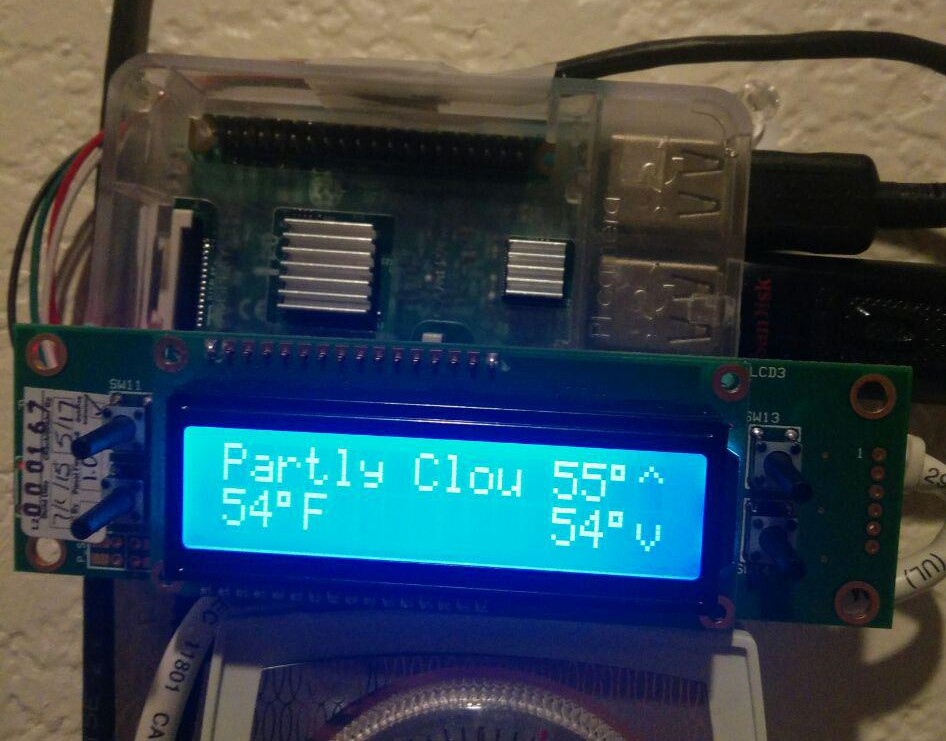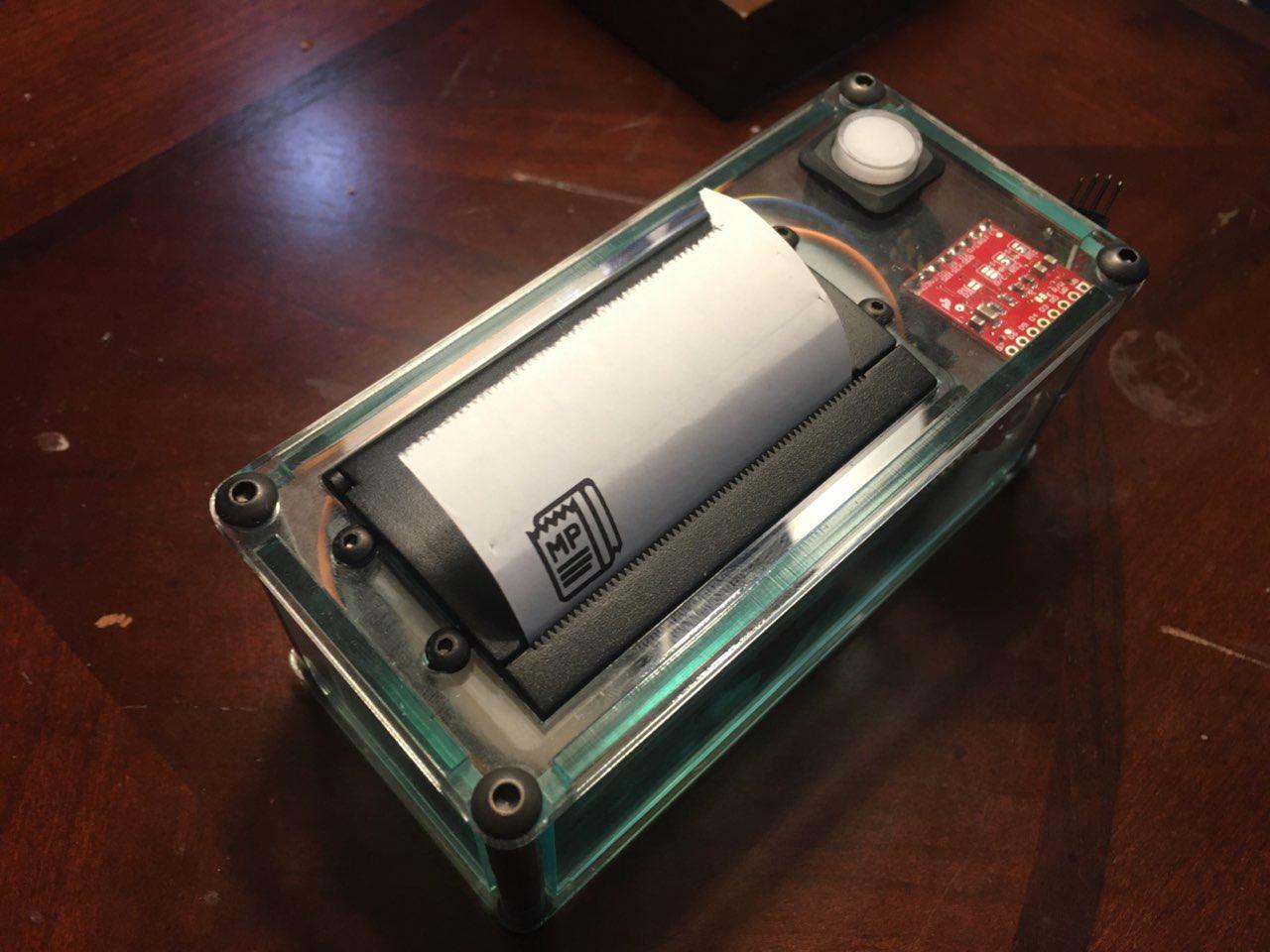This project was created in 56 hours during a Major League Hacking competition. It is a twitter bot that uses
Markov Chaining to create tweets based on currently
trending tags. It scrapes tweets on a selected tag, along with images and hashtags, and creates the "perfect
(read: most average) tweet". It also uses the Google Vision API to gather information on images to add the most
relevant image.
Project is hosted on GitHub
Home Weather

A project created by Alex Gittemeier and I over about three months during the
spring 2019 semester. Because Midwestern weather is liable to change on a dime, we got tired of having to dig out
a phone or wait for a webpage to load to be able to get a quick glance at the forecast. It was created with
convience in mind. It is programmed primarily in Ruby and uses Dark Sky for
weather information, which provides a lot of useful information, such as weather alerts issued by NOAA.
The whole project is comprised of a Raspberry Pi 3 and a dot-martix display harvested from an Acellus server.
Despite the fact that the original software used to control the panel was closed source, the software was reverse
engineered, allowing for full control of the device.
Current functionality is light, but useful:
- Weather Condition (Cloudy, Clear, Rain, etc.)
- Current Temperature
- Today's High/Low
- NOAA Weather Alerts (When issued)
- Estimated Precipitation (When rain is forcasted)
This project is currently shelved. The dot matrix display is currently bricked.
Morning Paper

This project was a collaboration in a small team of three as a final project for an IoT course. Morning Paper
is, at it's very core, a Particle Photon
connected to a thermal printer. It's purpose is to offer someone a quick to-do list before leaving their home.
At it's final proposal stage it supports weather forcasts and to-do lists. It's fully supported by a back end
written in Ruby, with plugin support. The device itself is programmed in C++.
The main inspiration for this project was an annoyance with the way that virtual shopping lists work. First off,
a modern smartphone is an expensive and usually fragile device. Pulling out your cell phone in the middle of
shopping is a tedious task. We thought fumbling with a phone is way more trouble than it's worth. We wanted to
bridge the "add items anywhere" aspect of an online shopping list with the recyclability and low cost of a piece
of paper.
Interesting technologies:
- Interrupt Service Routines (ISR's)
- Process Threading
- TTL Serial
- Webhooks
Credit to the team: Alex Gittemeier and
Keenan Piveral-Brooks. Two of the most talented individuals I've worked with. The sheer amount of polish this
project ended with could have not been reached without their work.
This is an example game that I put together for my Intro to Game Development course at Northwest Missouri State University.
It utilizes assets provided by Godot (the engine creator) and other places. Check out the
repository on Github!
It's not much, but I thought it would be neat to host a game on here.
-
This website (as in, literally the one you're looking at) was created as a fun way to break from the
overly too-scared-to-deviate-from HR Standard resume. Over time it's evolved to add more projects, but I
decided I should try my hand at making the website itself a project. The main goal of it was to learn a new web
technology. It's a Spring application serving static pages with Thymeleaf, because recreating the pages in
something like React would be a massive undertaking for the time and energy that I currently have to spend.
I decided to take the pick-your-own-adventure route and use Gradle, as I've had some experience with Maven.
That wasn't a very fun choice, purely because it seems everyone on Stackoverflow, every tutorial author, and
practically everyone else on the internet used Maven. Slightly annoying, but the challenge was nice. I think I
could find more exhausting ways to spend 6-8 hours, but not a bunch more that are as rewarding.
- More projects to come...